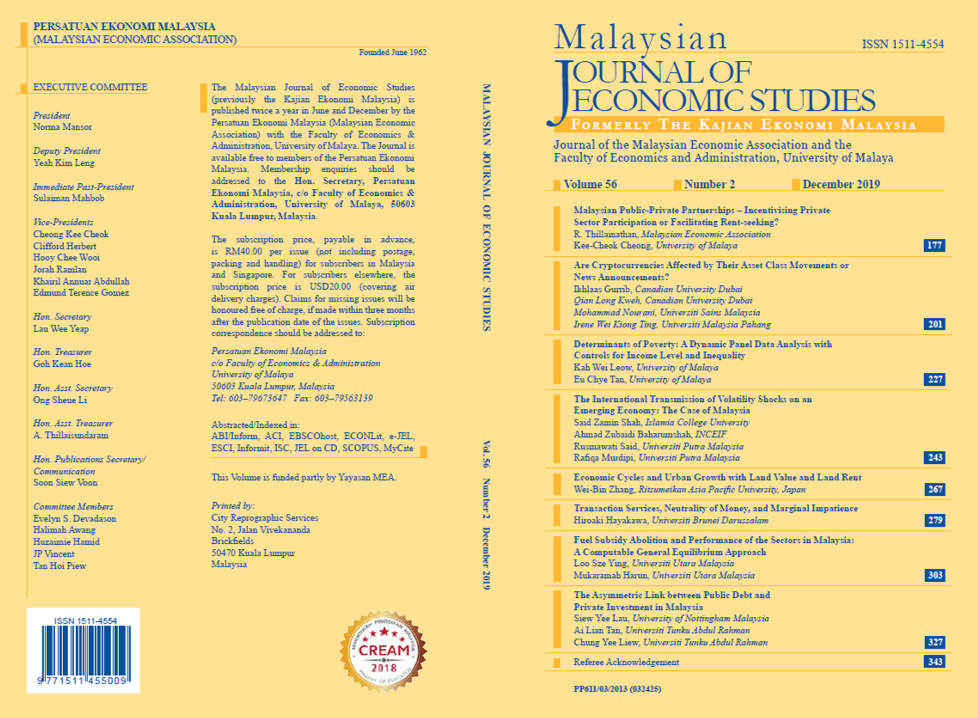The Asymmetric Link between Public Debt and Private Investment in Malaysia
DOI:
https://doi.org/10.22452/MJES.vol56no2.8Keywords:
Public debt, private investment, asymmetric relationship, NARDLAbstract
This paper intends to examine the existence of asymmetric effect of public debt on private investment in Malaysia. As Malaysia’s public debt has been rising in recent years the question has been raised on whether the persistently high debt level can negatively affect private investment or otherwise. This study, which uses non-linear autoregressive distributed lags (NARDL) estimation with data from 1980 to 2016, shows some evidence of asymmetrical effect in private investment–public debt nexus in both the long- and short-run. There are evidences of long-run asymmetry between private investment and total public debt, external debt, and federal government debt. In the short run, asymmetric relationship exists between private investment and domestic debt, external debt, and federal government debt. The findings also conclude that, in both long-run and short-run, higher public debt crowds out private investment, which is in line with the crowding-out effect hypothesis. Hence, policy-makers are advised to maintain public debt at a healthy level to ensure private investment is not being crowded-out.

